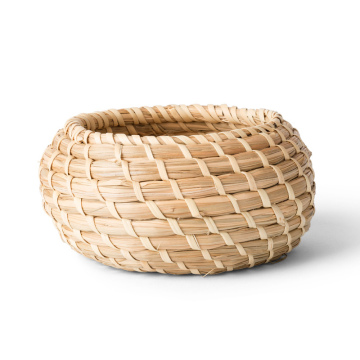A Culinary Journey: Enjoying Authentic Japanese Tempura
Introduction to Tempura: The Essence of Japanese Cuisine
Tempura is a renowned dish in Japanese cuisine, distinguished by its light and crispy batter that envelops a variety of vegetables and seafood. The origin of tempura can be traced back to the 16th century, when Portuguese missionaries introduced frying techniques to Japan. Initially called ‘peixinhos da horta,’ this dish quickly adapted to local ingredients and tastes, paving the way for what we now recognize as tempura.
The cultural significance of tempura extends beyond its flavorful profile; it embodies the confluence of foreign and domestic culinary traditions. This evolution highlights Japan’s ability to embrace external influences while integrating them into its cultural fabric. Traditionally, tempura is made with fresh, seasonal ingredients, showcasing the importance of local produce in Japanese cooking. Vegetables such as sweet potatoes, bell peppers, and mushrooms, along with seafood including shrimp and fish, are commonly utilized. The freshness of the ingredients directly impacts the flavor and quality of the finished dish.
Central to the preparation of tempura is the batter, which is a delicate mixture of flour, water, and sometimes egg. It is essential to maintain a balance between a light texture and a crisp finish, achieved by using cold water and avoiding excessive mixing. This art of batter preparation is a skill passed down through generations, underpinning the craft of tempura cooking.
Across various regions in Japan, there are local variations of tempura that reflect distinct culinary traditions. For instance, in Tokyo, you may find tempura served as a standalone dish, while in Kyoto, it is often included as part of a seasonal kaiseki meal, showcasing its versatility. Each style of tempura adds unique layers to the culinary narrative of Japan, enriching the experience for those who indulge in this beloved dish.
Planning Your Tempura Tasting Trip
Embarking on a culinary journey to experience authentic Japanese tempura is an exciting endeavor that requires careful planning to fully appreciate this exquisite cuisine. To begin, selecting the right time to visit Japan can significantly enhance your tempura dining experience. Spring, with its cherry blossoms, and autumn, showcasing vibrant foliage, are both excellent seasons for travel. These periods not only provide a beautiful backdrop but may also offer seasonal ingredients utilized in tempura dishes, elevating the overall tasting experience.
When it comes to cities renowned for their tempura offerings, Tokyo and Kyoto shine as prime destinations. In Tokyo, bustling neighborhoods such as Nishiazabu and Ikebukuro boast numerous establishments that specialize in high-quality tempura. Meanwhile, Kyoto, famous for its traditional Ryokan inns, also hosts esteemed tempura restaurants that highlight local flavors and ingredients. Apart from these cities, exploring other regions such as Osaka—known for street food—can reveal hidden tempura gems that capture the essence of this culinary art.
In selecting specific restaurants, it is recommended to seek out venues that have established themselves as purveyors of authentic tempura. Look for establishments with a long-standing reputation, where the chefs prioritize fresh, seasonal ingredients and traditional cooking techniques. Dining at such locales often necessitates making reservations, especially during peak seasons. To ensure a pleasant experience, it can be helpful to familiarize oneself with the menu options beforehand. Tempura menus often feature various items ranging from vegetables to seafood, allowing you to customize your meal as per your preferences.
Lastly, understanding the customary service and dining etiquette is crucial for a seamless experience. Typically, tempura is served with a dipping sauce, and it is polite to appreciate the craftsmanship behind each dish. Taking note of these details will not only enhance your culinary adventure but will also allow you to engage respectfully with the food culture in Japan.
The Tempura Experience: What to Expect at a Traditional Tempura Restaurant
Dining at a traditional tempura restaurant is a unique experience that tantalizes not only the taste buds but also the senses. Upon entering, patrons are typically greeted by a minimalist yet elegant setting that emphasizes the culinary artistry on display. Many tempura restaurants feature a counter where diners have a clear view of the chef expertly frying up fresh ingredients. This open kitchen concept enhances the overall dining experience, as guests can witness the precision and skill involved in creating this beloved Japanese dish. The ambience is often complemented by soft lighting and traditional Japanese decor, promoting a sense of calm and appreciation for the refined culinary art of tempura.
The diverse menu at a traditional tempura restaurant showcases a variety of seasonal vegetables and high-quality seafood, each selected for optimal freshness and flavor. Diners can expect to encounter popular options, such as shrimp, squid, and a colorful array of vegetables like sweet potato and bell peppers. Each piece is carefully coated in a light batter and fried to achieve the perfect balance of crispiness and tenderness. Alongside the tempura, restaurants typically offer dipping sauces, primarily tentsuyu, made of dashi, soy sauce, and mirin, which adds depth to the flavors. Additionally, grated daikon radish may be served as a refreshing condiment that complements the fried components.
When savoring tempura, it is essential to appreciate each piece slowly. Taking the time to indulge in the flavors and textures enhances the overall experience. Proper etiquette includes using chopsticks for both eating tempura and dipping it in sauce. Conversations tend to be subdued, promoting a respectful atmosphere where each bite can be fully appreciated. In traditional dining venues, it is common to observe the culinary precision of the chef, leading to a profound respect for the craftsmanship involved in preparing this iconic dish. Through this immersive experience, diners not only enjoy a meal but also gain insight into the culture and tradition behind tempura.
Post-Meal Reflections: Savoring the Tempura Experience
As you finish a delicious tempura meal, it is essential to take a moment to reflect on the multitude of flavors and textures that have graced your palate. The crispiness of the batter encasing succulent vegetables and seafood provides a delightful contrast to the tender ingredients within. Each bite is a symphony of taste, from the light saltiness of the soy sauce to the umami-rich flavors of the tempura itself. Such culinary experiences not only satisfy hunger but also evoke a sense of joy and appreciation for the craftsmanship that goes into preparing authentic Japanese tempura.
Beyond the flavors, enjoying tempura can serve as a meaningful social affair. Sharing a meal with family and friends is a universal connector, and the act of savoring tempura together can deepen bonds. These shared experiences create lasting memories that show how food acts as a conduit for connection, celebration, and warmth. Conversations flow easily over baskets of tempura, allowing for laughter and storytelling amid the comfortable atmosphere of shared enjoyment.
For those wishing to extend the tempura experience beyond their dining adventure, recreating this delightful dish at home can be an engaging endeavor. Begin by selecting fresh ingredients such as seasonal vegetables or shrimp, and prepare a light batter using icy water and flour for that signature crispiness. Utilizing a deep-frying method will ensure an authentic texture. Pairing your homemade tempura with dipping sauces, such as tentsuyu, can further elevate the experience. These simple recipes and tips provide avenues to explore the culinary art of tempura, allowing anyone to delve into the world of Japanese cuisine in their own kitchen.
Ultimately, the joy of savoring tempura transcends taste alone. It encapsulates cherished moments, the richness of cultural experiences, and the creativity involved in culinary exploration. Embracing new cuisines and celebrating each meal creates lasting imprinting on our memories and enriches our culinary journeys.
Situs Gacor Pulsa Tri 5K Tanpa Potongan Terbaru 2025
Temukan situs gacor deposit pulsa Tri 5K tanpa potongan terbaru di tahun 2025 dan nikmati beragam permainan online dengan aman. Penting untuk memilih situs yang terpercaya agar pengalaman bermain Anda menyenangkan. Dapatkan kesempatan untuk meraih berbagai bonus dan promosi menarik serta pastikan semua transaksi diproses tanpa biaya tambahan. Bergabunglah dan nikmati permainan seru yang ditawarkan oleh situs gacor pulsa di tahun ini.
Situs Deposit Pulsa Tri 5K Tanpa Potongan Paling Gacor
Temukan kemudahan transaksi dengan situs deposit pulsa Tri 5k tanpa potongan. Nikmati proses deposit yang cepat dan efisien tanpa ada potongan, serta optimalkan setiap nilai deposit Anda. Dengan langkah-langkah yang sederhana, Anda bisa melakukan transaksi dengan mudah dan merasa lebih menguntungkan. Bergabunglah sekarang dan gunakan pulsa Anda secepatnya tanpa menunggu lama!
Cara Mudah Main Situs PG Soft Via Pulsa Tri dan Indosat 5000 Tanpa Potongan
Situs PG Soft kini semakin populer di kalangan penggemar permainan online. Dengan berbagai pilihan permainan yang menarik dan bonus yang menggiurkan, semakin banyak orang yang tertarik untuk mencoba keberuntungan mereka. Salah satu cara yang praktis untuk melakukan deposit adalah melalui pulsa, khususnya dengan provider Tri dan Indosat.
Keuntungan Menggunakan Pulsa untuk Deposit
Dengan menggunakan deposit pulsa Tri dan deposit pulsa Indosat, pemain bisa melakukan deposit mulai dari nominal 5000 tanpa potongan. Ini adalah pilihan yang sangat menguntungkan, terutama bagi mereka yang tidak memiliki rekening bank atau kartu kredit. Proses deposit pun sangat cepat dan mudah, sehingga Anda bisa langsung bermain tanpa harus menunggu lama.
Langkah-Langkah Melakukan Deposit
Untuk melakukan deposit di situs PG Soft via pulsa, langkahnya sangat sederhana. Pertama, pastikan Anda memiliki pulsa yang cukup. Kemudian, akses situs PG Soft dan lakukan pendaftaran jika Anda belum memiliki akun. Pilih opsi deposit via pulsa, masukkan nomor telepon, dan jumlah deposit yang diinginkan. Ikuti instruksi yang diberikan dan tunggu konfirmasi. Setelah selesai, saldo Anda akan segera terisi dan siap digunakan untuk bermain.











